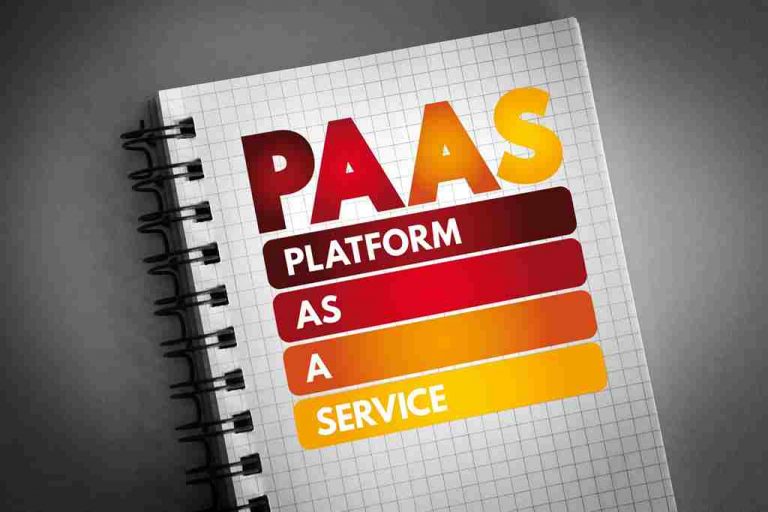Содержание
- Native Vs Hybrid App Development: What To Choose? All The Advantages And Disadvantages In One Place
- Less Development Time
- When To Use: Native Apps Vs Web Apps Vs Hybrid Apps
- What Is A Native Mobile Application?
- More Security
- The App Development Process
- Things To Consider When You Hire A Mobile App Developer
- Hybrid Apps
This problem is most pronounced when new versions of Android and iOS are released. Native developers are given early access to the new software development kit to start building their applications with recently added features. Because of this lead time, users of native applications have access to new platform features the day they update their phone to a new operating system. This is an important part of generating loyalty amongst its users. Native apps are costly but can become a wise investment move in the long run.

A separate development process is required to make apps for different platforms. Read on to know which is better for your mobile app development. Whichever mobile app development type you’ve picked, remember that it’s important to implement it accurately! Use our checklist with 25 steps to building a mobile app that brings you real profit. Native apps, if built accurately, guarantee the highest level of user experience among all the mobile app types. But if you want the same app to appear on an Android device, you’ll need to invest in the separate Android native app development for that.
Native Vs Hybrid App Development: What To Choose? All The Advantages And Disadvantages In One Place
Developers have to go through a longer process, which means clients typically have to pay more upfront. To a specific platform, and they work with the device’s built-in features. This combination, along with the fact that many elements are already pre-loaded and ready to go, allows for quick access at all times.
Things to Consider before Beginning React Native App Development – WinBuzzer
Things to Consider before Beginning React Native App Development.
Posted: Fri, 26 Aug 2022 07:00:00 GMT [source]
Some native apps can actually control the device on which it’s been installed. When you decide to develop an app for your business, you have to make a lot of decisions. Thousands of enterprise customers use Ionic to build mission-critical apps for their customers, both external and internal. That said, many of the UI libraries have taken great care in replicating most of the common UI components necessary for your app, so this risk is reduced. When an app submission is incomplete, this time might be prolonged until all the required information is completed.
Less Development Time
So the ‘hybrid’ in hybrid app development comes from its fusion of web app and native-like app features. This next section goes into more detail about the specific advantages of the hybrid app development process and the apps themselves. The native codebase will be easier to build upon in the future and be more adaptive to the changing mobile landscape.
- For instance, a native app built for android will not run on iOS, for that a separate app has to be built from the ground up.
- They exist in the app store, like native apps, and can utilize various device features.
- Cross-platform apps are different from pure hybrid apps in the sense that the latter uses a mixture of web and mobile features.
- It is helpful to look into workplace strategies, such as theagile scrum manifesto, to make the most out of your team’s valuable time and skills.
- And you don’t need to hire special developers, as PWAs can be created using HTML, CSS, JavaScript, Angular, React, and other technologies.
- Native apps should pass the verification stage to appear on the app store platform and become available for users.
- Alternatively, you can build workable and multi-device solutions fast by adopting a hybrid app development approach.
Based on budget only, the choice between native versus hybrid app development or web app versus native app development would be as follows. Native apps are among the most popular, and many companies prefer this type due to the ability to create rich functionality and provide a better user experience. Apps are fast, secure, and have access to built-in smartphone features like cameras, microphones, contact lists, NFC, Bluetooth, and more. Hybrid app development brings together native and web app functionality to give you the best of both worlds. You get near-native functionality using the device’s own hardware but at a drastically reduced cost, compared to making native apps for every different operating system.
When To Use: Native Apps Vs Web Apps Vs Hybrid Apps
Technically speaking, Flutter is a complete software development kit not just a framework. As an SDK it also includes widget libraries, integration APIs and rendering engines. It boasts a ‘hot reload’ feature so that any changes to the codebase are reflected immediately in the app. Xamarin is now integrated into the .Net framework which gives developers access to all .Net libraries and development packages.

This enables you to easily access the different platform SDKs and libraries. All that is needed to open such applications is a web browser, and they run on any type of OS and mobile device. They are simpler in functionality and do not offer the same performance as native applications.
Push notifications are particularly great if your app would benefit from prompting users to carry out an action, such as give feedback or checkout an online shopping cart. Hopefully, we have made it easy for you to decide on the type of app you want to build. Since time is one of the major factors when you are a startup, a Hybrid app is the best way to go since it can be built much faster than Native apps. If you are a startup, your primary goal is to build a strong foundation without going overboard when it comes to spending. Hybrid apps are way cheaper to build than Native apps, so startups are free to invest the money elsewhere in their business. Hybrid apps can run on web browsers since they are built using web technologies.
What Is A Native Mobile Application?
This way, cross-platform native app development will take place. Hybrid mobile app development doesn’t require sophisticated knowledge from coders. The most popular benefit of hybrid apps is cutting time and spendings during the development stage. That’s why this type is the best solution when your task is to create a prototype.
For most businesses, a hybrid app will deliver consumers a great experience. Speed variance will likely only be felt by those extremely conscious of it an not by the end-user (your B2B/B2C consumer). Knowing your target market will help you decide how important the split-second difference is. Now a brief description of native app development, in the context of mobile development anativeapplication is a software program that is developed for use on a particular platform or device.
These applications can immediately access the device’s hardware, such as the GPS, camera, and microphone, making them more rapid in execution. Push notifications are yet another significant benefit of choosing native app development. You’ll have access to every API and tool offered by the platform that you’re developing for.
The cost to fighting the system increases exponentially as time goes on, too. There is too much invested in the product to start over, but the truly competitive features aren’t done – and perhaps aren’t even https://globalcloudteam.com/ possible, depending on the hybrid platform choice. The hybrid approach tricks stakeholders into a false sense of progress until it is too late to switch and the inferior product simply must be shipped.
In this article, we will describe the basic differences in application types so you can decide where to start and where to go. A new software supply chain security module for Aqua’s platform correlates runtime security monitoring with pre-deployment scans … The need to test the application on a range of devices to ensure proper operation. PhoneGap works with JavaScript, HTML and CSS, so your team is less hindered by which coding languages they know. The main disadvantage to keep in mind with PhoneGap is that it doesn’t have a great success rate with gaming apps. If you looking for an app idea, this infographic is the one thing you should read.
More Security
They’re made with web technologies such as HTML, CSS, and JavaScript. Customers may also install them on their Android or iOS devices via app stores. With native apps you can seamlessly tap into the wider functionality of a mobile device, leveraging the camera, microphone, GPS, swipe gestures, and more. When a business launches a native app, it mirrors the others a user would have downloaded from the same app store, and from this comes familiarity. The same intuitive gesturing (swiping, etc.) is required from app to app so your application will not feel foreign to your user. In the past, this was less the case for hybrid applications, but today the same gestures are well supported by many of hybrid frameworks.

These solutions create a native shell application that is just the platform’s webview component in which it will load your web application. This gives you the ability to create and publish true native applications that can be submitted to each of the platform’s app stores for sale. This solution is a blend, hence the name hybrid, of both native and web solutions. Where the core of the application is written using web technologies , which are then encapsulated within a native application. Through the use of plugins, these applications can have full access to the mobile device’s features.
Although a hybrid app will typically share similar navigation elements as a Web app, whether or not the application can work offline depends on its functionalities. If an application does not need support Hybrid App Development from a database, then it can be made to function offline. Native apps are those developed for one specific operating system – the most common OS is Android, with70% of smartphonesrunning on the platform.
Native mobile apps are applications developed to target either Android or iOS. Depending on which operating system you are developing for, your applications are usually coded in a specific programming language. The fundamental difference between native and cross-platform development stems from what operating system you are developing for. Native mobile development allows you to build apps for a particular operating system — either Android or iOS.
Following are the rewards of hybrid or cross-platform applications. Web applications are commonly written in HTML, JavaScript or HTML. Web applications don’t need to be downloaded and are accessed through the device’s Web browser. Web applications do not have the ability to leverage the hardware on a chosen platform. Cheaper to develop compared to building two versions of a native app for two different platforms.
However, developers working with hybrid approaches must wait for the third-party developer of the hybrid tool to implement the bridge to new operating system features. There are different types of mobile app technologies for you to choose from. The technology that your business needs depends on several factors including the type of business, your customer base and also the cost-effectiveness. Native and Hybrid are two of the most common approaches to mobile app development. With 13 years of experience in the IT industry and in-depth technical training, Peter could not be anything but our CTO. He had contact with every possible architecture and helped create many solutions for large and small companies.
Hybrid Apps
The best advantage of native mobile apps is a better user experience. Native applications are designed specifically for a particular operating system. They follow strict standards that ultimately improve and synchronize the user experience with the specific operating system. As a result, the app’s flow is more natural since each platform has its UI criteria. So, if you wanted to use TouchID on an iOS device as a login option, or wanted to connect to a Bluetooth device, this can be easily done by installing a plugin.
